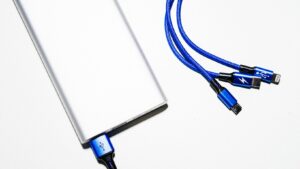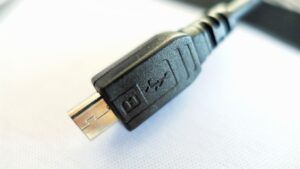USB Hub Connection
 In today’s tech-driven world, the need for multiple device connections is more crucial than ever. USB hubs have emerged as essential tools for anyone looking to expand their computer’s connectivity options. Whether it’s for charging devices, transferring data, or connecting peripherals, a USB hub simplifies the process by offering multiple ports from a single connection.
In today’s tech-driven world, the need for multiple device connections is more crucial than ever. USB hubs have emerged as essential tools for anyone looking to expand their computer’s connectivity options. Whether it’s for charging devices, transferring data, or connecting peripherals, a USB hub simplifies the process by offering multiple ports from a single connection.
Understanding how to effectively use a USB hub can significantly enhance productivity and streamline your workspace. From professionals juggling multiple gadgets to gamers needing extra ports for accessories, a well-chosen USB hub can make all the difference. Dive into the world of USB hub connections to discover how these small yet powerful devices can transform your tech experience.
Understanding USB Hub Connections
USB hub connections bridge multiple devices to a single computer port, enhancing connectivity. They accommodate peripherals like keyboards, mice, and external drives.
Types of USB Hubs
- Powered USB Hubs: These hubs have an external power source. They manage energy-intensive devices such as hard drives or
 scanners. Example: TP-Link UH720 has 7 ports and offers rapid charging.
scanners. Example: TP-Link UH720 has 7 ports and offers rapid charging. - Unpowered USB Hubs: These hubs draw power from the computer. They best support low-power devices like flash drives and keyboards. Example: Anker 4-Port USB Hub is compact and efficient.
USB Hub Standards
- USB 2.0: Delivers data transfer rates up to 480 Mbps. Suitable for basic tasks like connecting printers and mice.
- USB 3.0: Provides speeds up to 5 Gbps, adequate for external hard drives and video capture devices.
- USB 3.1 and USB 3.2: Enable speeds up to 10 Gbps and 20 Gbps, respectively. Ideal for data-intensive tasks, these hubs support advanced peripherals seamlessly.
Connection Methods
- Direct Connection: Plugs directly into the computer’s USB port. Offers a stable and fast connection. Example: Sabrent 4-Port USB
 Hub connects directly with no cables.
Hub connects directly with no cables. - Cable Connection: Uses a cable to link the hub to the computer. This method improves accessibility for devices placed further away. Example: AmazonBasics 4-Port USB Hub with extended cable.
- Number of Ports: Assess the number of devices to be connected. A 7-port hub fits more devices than a 4-port one.
- Power Requirements: Determine if devices require additional power. Powered hubs suit high-demand peripherals.
- Data Transfer Speed: Match the hub’s speed capability to your devices’ needs. USB 3.0 suffices for most modern peripherals.
- Build Quality: Ensure the hub’s durability and reliability. Brands like Anker and TP-Link offer robust options.
Understanding USB hub connections helps optimize device connectivity and improves productivity. They simplify peripheral management and expand available ports efficiently.
Types Of USB Hubs
Different types of USB hubs cater to varying power and connectivity needs. Users can choose between powered and unpowered versions based on their requirements.
Powered USB Hubs
Powered USB hubs, also known as active hubs, connect to an external power source. They offer stable power to connected devices, making them ideal for high-powered peripherals like external hard drives and printers. This type of hub supports multiple devices without draining the computer’s power. Examples include the Anker 10-Port 60W USB 3.0 Hub and the Sabrent 4-Port USB 3.0 Hub with Power Switches.
Unpowered USB Hubs
Unpowered USB hubs, or passive hubs, do not have an external power source. They draw power directly from the connected computer. These hubs are suitable for low-powered devices like keyboards, mice, and USB flash drives. They are typically more compact and portable. Examples include the AmazonBasics 4-Port USB 2.0 Ultra-Mini Hub and the Sabrent 4-Port USB 2.0 Hub.
Features To Look For In A USB Hub
Number Of Ports
More ports provide greater connectivity options. Users should evaluate how many devices they plan to connect. Common configurations range from 4 to 10 ports, with some hubs offering up to 16. For example, a professional working with multiple peripheral devices and external drives will benefit from a hub with more ports.
Data Transfer Speed
Compatibility with high-speed data transfer standards is crucial. USB 3.0, USB 3.1, and USB 3.2 support faster transfer rates, making them ideal for tasks requiring rapid data movement, such as transferring large files. Users should note that while USB 2.0 offers slower speeds, it’s sufficient for low-bandwidth devices like keyboards and mice.



